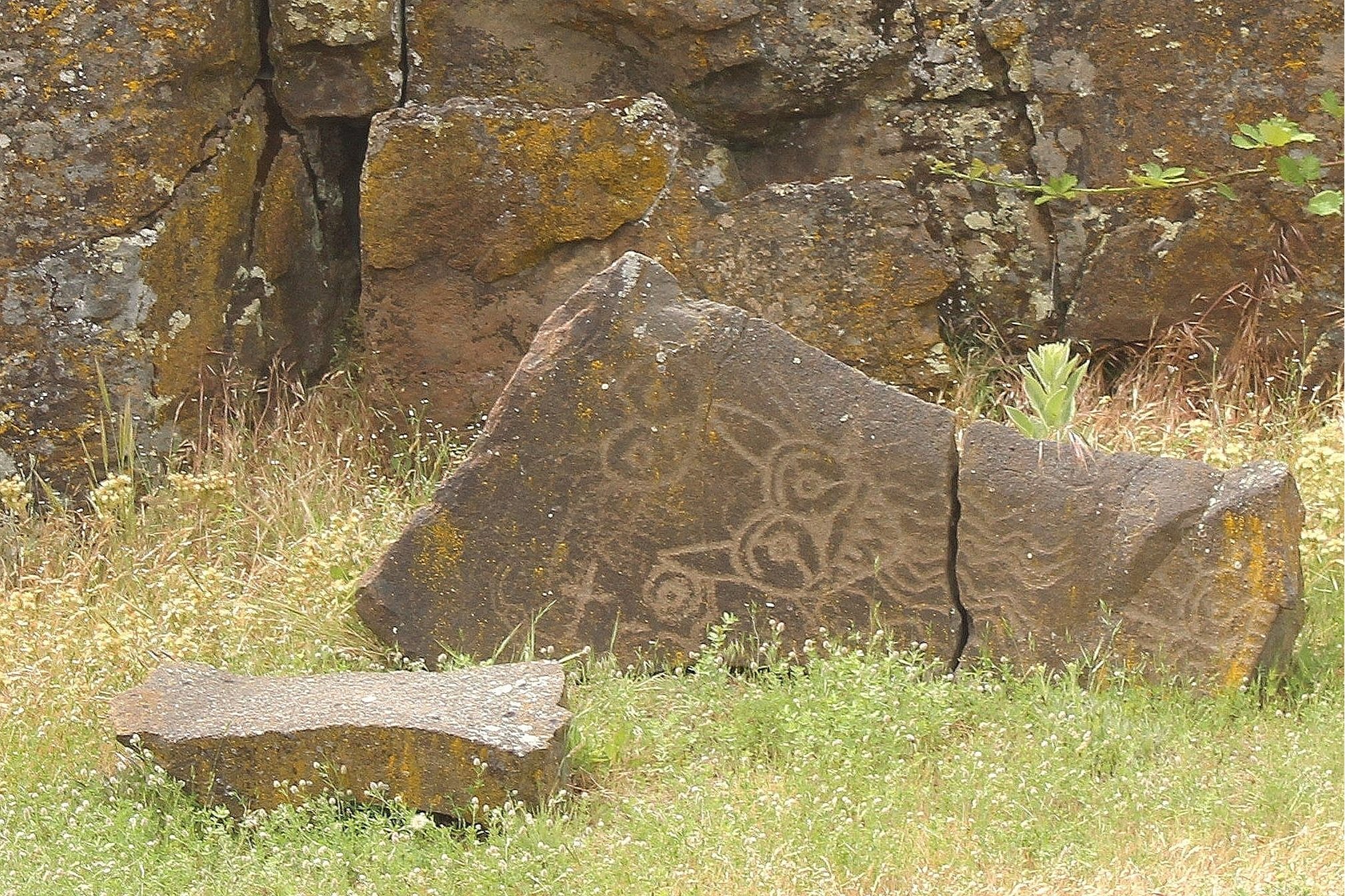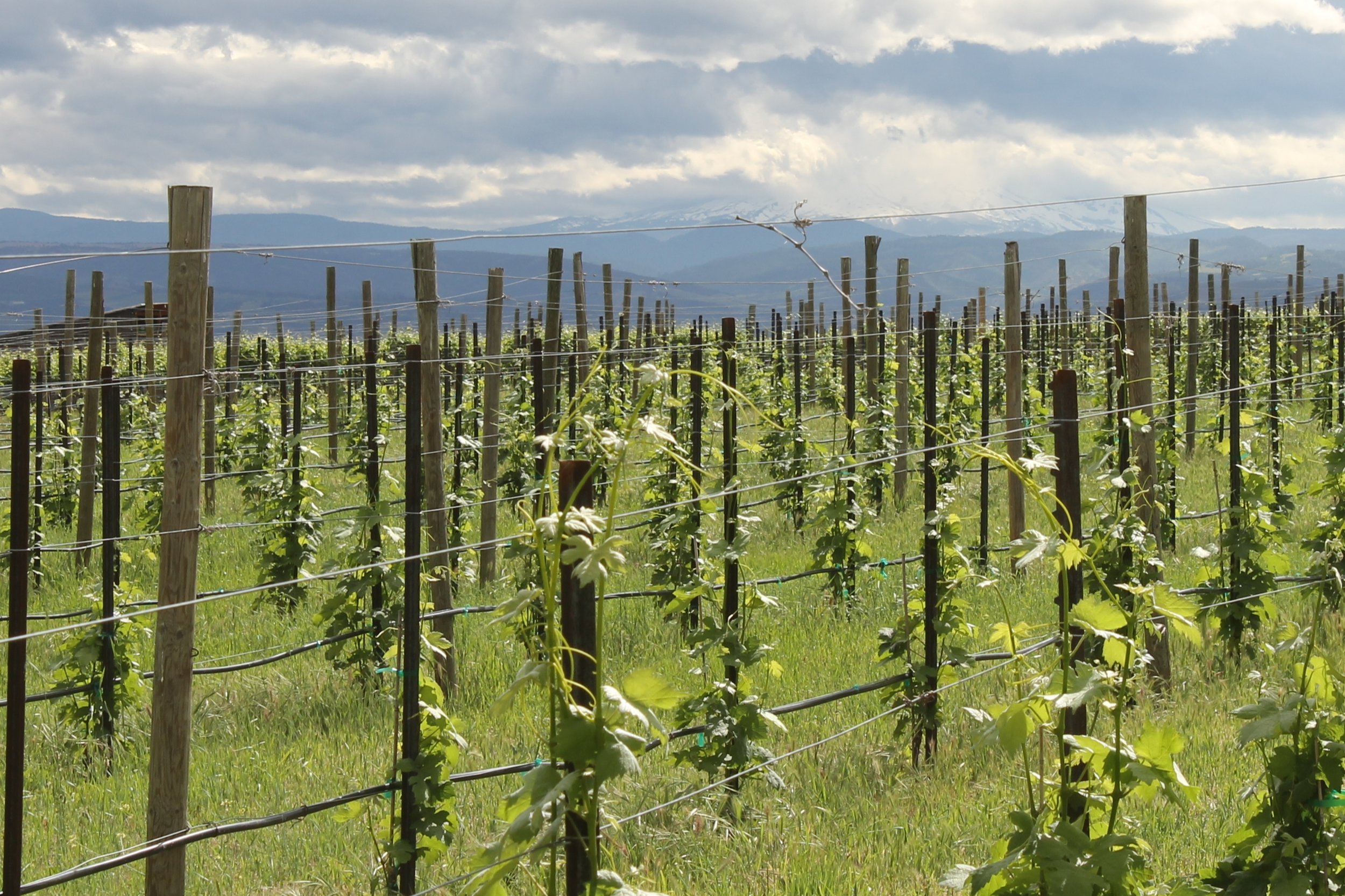Columbia Hills Petroglyphs and Horsethief Butte (Plus a Winery Visit!)
I love exploring the Columbia Gorge. While many parks and trails can get crowded, sometimes REALLY crowded, others tend to fly under the radar despite being just as incredible.
Washington’s Columbia Hills State Park is one of the most underappreciated places in the Columbia Gorge. Around 90 minutes east of Portland, this park feels like a world away. Along the drive, pine forests transition to rolling grassy hills and exposed craggy basalt cliffs. Wildflowers thrive here in spring and summer. In winter, drier weather provides many opportunities to escape Portland’s ubiquitous rain. As a bonus, there are some great wineries nearby. Here is a suggested day trip itinerary that hits my favorite highlights in the area.
The Petroglyphs
Know before you go
Parking: There is a small gravel lot next to the petroglyphs. I’ve never had trouble finding a spot there and you may be the only car when you visit. There are no restrooms right at the petroglyphs, but there are some at the picnic area nearby.
Pass required: The petroglyphs (along with all of Columbia Hills State Park) require the Washington Discover Pass. You can purchase a day pass ($10) or a yearly pass ($30) online ahead of time. There is also a fee station near the picnic area to purchase a pass same day. For more information than you ever wanted to know about recreation passes, check out my guide here.
Accessibility: The short interpretive trail to see the petroglyphs is flat, paved, and easily wheelchair accessible.
Other info: The petroglyphs are federally protected as a historic site as well as being of cultural and spiritual significance to local Native American tribes. Stay on the trails and visit as you would a place of worship.
About the petroglyphs
There are few places in the Columbia Gorge that excite the imagination as much as the petroglyphs in Columbia Hills State Park. The stone slabs with their fascinating rock etchings were once set directly into the cliffs of the Columbia Gorge and numbered in the thousands. While most of the petroglyphs were lost when the Dalles Dam was constructed and the reservoir began to fill, a small subset was removed and preserved. These remaining petroglyphs are now displayed on the short interpretive trail at Columbia Hills State Park.
There is something irresistible about the petroglyphs. Made by the First Peoples of the Columbia Gorge and surrounding areas, they feel ancient yet timeless. In a different medium, they would not look out of place in a modern art gallery. In many ways, the petroglyphs raise more questions than they answer. No one knows today exactly who carved them or when. Some are thought to be thousands of years old. Some are recognizable as birds, deer, or other animals. Others are less obvious and, perhaps for that reason, more intriguing. All have a way of pulling you in and tempting you to imagine times long ago and the people who lived during them.
Tours
Washington State Parks offers guided tours of the petroglyph site on Fridays and Saturdays at 9 AM from April through October. The tour provides access to additional petroglyphs, including the significant She Who Watches petroglyph. Reservations are required and must be confirmed by email. The Washington State Park service recommends making reservations 2-3 weeks in advance. Pets are not allowed on the tours. You can find more information about tours here.
Wildflowers
Wildflowers in the area will be best in spring but continue to look for some blooms remaining in the summer months. California poppies were the star during my summer visit.
Horsethief Butte
Distance: 1.7-mile loop
Elevation gain: 250 feet
Difficulty: Mostly easy with some difficult sections if you hike through the butte (optional).
Dog friendly: Yes, leashed dogs are allowed, although you’ll likely want to avoid the steepest trail sections.
Family friendly: Yes, especially around the base of the butte. You may want to avoid the steeper portions of the trail on the butte with younger children.
Pass required: Washington Discover Pass, $10/day. You can buy a pass at the trailhead. If you bought a day pass for the petroglyphs, you don’t need an additional pass.
Restrooms: Yes, at the trailhead.
Mock orange blooms on Horsethief Butte
On the trail:
Exploring Horsethief Butte can be as hard or easy as you like. A flat, gentle trail heads from the parking lot alongside and behind the butte with views of Horsethief Lake and the Columbia River. This section of trail circles the base of the butte and is the best way to see its entirety.
Horsethief Butte is a great place to see wildflowers in spring and summer. They grow in the fields around the butte and its rocky crags. Depending on the time of year, you may see desert parsley, penstemon, yarrow, coastal manroot, and lupines, among others. When I visited in summer, mock orange bushes bloomed around the base of the butte, filling the air with a delicate jasmine-like aroma.
The trail becomes rougher as you go. Horsethief Butte is popular among rock climbers, and it’s easy to see why. Craggy basalt formations provide tempting opportunities to climb up and reach some phenomenal views. You don’t need to be a climber to navigate the trail, though. Our amateurish scrambling was perfectly adequate for exploring it.
There are some pictographs on Horsethief Butte as well, but don’t expect the clear and well-preserved etchings of Columbia Hills Historic Site. They have been weathered and partially defaced by vandalism over the years. There are places marked off as protected, so make sure to avoid entering those areas.
To reach to the parking lot, you can return the way you came or do a short scramble down the north side of the butte.
Cascade Cliffs Vineyard & Winery
Seating: Indoor seating and outdoor picnic tables. Reservations are available and recommended, although my friends and I dropped in with no problems.
Wine offerings and cost: Tasting flights ($25) and bottles (around $30-75). The cost of the flight is waived with a bottle purchase.
Certainly, I couldn’t find a petroglyph-themed winery to wrap up the day, right? Oh ye of little faith, I did! Only a couple miles east of Horsethief Butte is Cascade Cliffs Vineyard and Winery. The design on their wine label is copied from a petroglyph found on their property deep in the vineyard. While there is a comfortable tasting room inside, I recommend sitting outside if the weather permits. The vineyard surrounds the tasting room and provides a picturesque foreground for the cliffs in the distance. Across the river, Mount Hood is visible on a clear day.
You won’t find any mass-produced or distributed wine at Cascade Cliffs Winery. This small operation produces wine primarily for its wine club members, although anyone visiting can try out a flight or bottle of their Columbia Valley wines. I was intrigued to learn that beyond the expected Syrah and Cabernet, Cascade Cliffs does a lot with Italian varietals, particularly Barbera, the vineyard specialty.
The atmosphere at Cascade Cliffs encourages exploration and experimentation, which is reflected both in their tasting room and wines. Our host went “off-script” on the tasting to show us what was new and interesting. Expect to get big fruit-forward flavors on the reds. The Columbia Valley Nebbiolo was a favorite of mine. Also, make sure to try the Petroglyph White, a blend of Riesling, Symphony, Gewurztraminer, and Grüner Veltliner, which I found to have refreshing lime and apple notes as well as just a hint of sweetness that provided it with good balance. It’s a great glass to sip on a sunny day as you take in views of the mountain.
More in Columbia Hills State Park
There is plenty more to see and do in Columbia Hills State Park! Here are a few suggestions:
Take a boat onto Horsethief Lake.
Have a picnic by the lake. In an area otherwise dominated by grassy fields and hills, the picnic area near Horsethief Lake has a lovely grove of trees that provides good shade on hot days.
Hike the Dalles Mountain Ranch trail. This trail will be most spectacular during spring when lupine and balsamroot are blooming, although it has great views year-round.
Enjoy the petroglyphs and cheers to your next adventure!
With love,
Emma
Getting there
Columbia Hills Petroglyphs:
To reach the Columbia Hills Petroglyphs from Portland, take I-84 East until The Dalles, then take US-197 to cross the bridge into Washington. There is no toll for this bridge. Continue on US-197 for about 6 miles, then turn right onto Highway 14 East. Look for signs for Columbia Hills State Park, which will be on your right.
Once you turn into the park, continue about a mile down the road to reach the petroglyphs. There will be an opportunity to turn left along the way. This road leads down to the picnic area and Horsethief Lake. Take this road to reach the restrooms or to buy a day pass. Otherwise, continue straight past this road to reach the petroglyphs.
Horsethief Butte:
From the petroglyphs, return to Highway 14, turn right, and head another mile east to reach Horsethief Butte. The parking lot will be on your right and is marked with a sign.
Explore nearby
Cross the bridge and check out the best things to do in The Dalles, Oregon.
Spend the day in Maryhill, Washington.
















